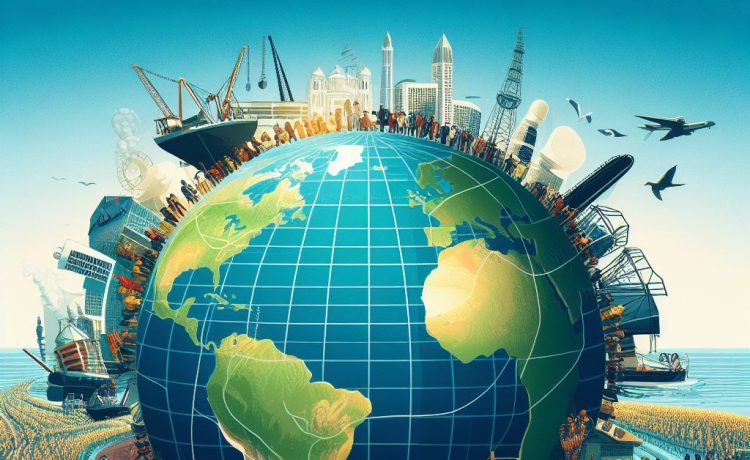Immigration has long been a driving force behind the evolution of national identity, weaving diverse cultural, social, and economic threads into the fabric of societies worldwide. From enriching traditions to fueling innovation, the movement of people across borders creates vibrant, dynamic communities. But it also raises complex questions about belonging, integration, and change.
How do nations balance preserving their heritage while welcoming new influences? What role does immigration play in shaping a country’s vision of itself? These are challenges every society faces, making the topic more globally relevant than ever.
In this post, we’ll explore how immigration redefines national identity, examining its impacts on everything from culture to economic growth. We’ll uncover examples from around the globe, shedding light on how countries adapt to these shifts and the opportunities they unlock. For more on how communities form strong connections in the face of change, check out our piece on how community events bring people together. Prepare to gain a deeper understanding of a truly global phenomenon and why it shapes not just nations, but the world we share.

How Immigration Influences Economic Innovation and Growth
Immigration plays a crucial role in driving economic innovation and growth. Immigrants bring diverse skills, unique perspectives, and entrepreneurial energy to their new communities. Many of the world’s most innovative companies, from startups to big tech names, were founded by immigrants who saw opportunities others missed. Companies like Tesla and Google, for example, owe much of their success to the vision of immigrant founders.
A diverse labor force encourages creativity and problem-solving by mixing various cultural viewpoints. This diversity fuels technological advancements, product development, and better decision-making, offering businesses a competitive edge. Immigrants also help fill labor market gaps, contributing to industries ranging from healthcare to engineering, which strengthens economies.
Additionally, immigrant entrepreneurs create jobs and boost local economies. They not only establish businesses but also attract global investments. For instance, research shows immigrant-owned firms are more likely to export products, linking local economies to international markets.
By recognizing and leveraging immigrant contributions, societies can encourage inclusive growth and unlock immense economic potential. Immigration isn’t just movement; it’s an opportunity for transformation.
The Impact of Immigration on Language and Traditions
Immigration deeply influences the evolution of languages and cultural traditions, creating a rich tapestry of shared heritage. When people move across borders, they bring their native tongues, enriching linguistic diversity. New phrases, words, and expressions often come, mixing languages and reflecting the multicultural connections within a community.
Cultural traditions evolve in much the same way. Immigrant communities introduce unique practices, festivals, cuisines, and art forms, enriching the host culture. For example, traditions like Lunar New Year celebrations or Mexican Dia de los Muertos have gained global recognition due to immigration, creating shared experiences.
However, this mixture of cultures also presents challenges. Immigrants often face pressure to assimilate, risking the loss of their native languages or cultural practices. Balancing preservation with integration becomes essential to keeping traditions alive while promoting inclusivity.
Ultimately, immigration offers opportunities to broaden perspectives, celebrate diversity, and create vibrant cultural identities. By valuing and incorporating these influences, societies can honor their heritage while adapting to shared global connections. Through immigration, language and traditions are not just preserved; they are transformed and reimagined.
Policy Approaches to Immigration and Their Societal Effects
Immigration policies play an important role in shaping societies. Approaches like open borders, quotas, and integration programs determine not just who enters a country but also how communities evolve. Each policy brings unique challenges and opportunities that ripple through economic, social, and cultural dimensions.
Open-border policies promote diversity and economic growth by encouraging a free flow of labor and ideas. However, they can strain public resources if not managed carefully. Quota systems allow governments to control immigration levels and match workforce needs, yet they can limit talent influx and lead to unequal opportunities.
Integration programs, such as language classes and cultural orientation, enable smoother transitions for immigrants, encouraging inclusion and reducing social tensions. Still, poorly executed programs may create division if local communities feel neglected or resentful.
Ultimately, the societal effects of immigration policies depend on how well they balance inclusion with national interests. Thoughtfully designed frameworks can amplify the benefits of immigration while minimizing obstacles, creating stronger, more vibrant communities that reflect the best of diverse perspectives.
Conclusion
Immigration enriches national identity by shaping culture, driving economic innovation, and encouraging societal growth. By valuing diversity and creating inclusive policies, we strengthen our collective future. Let’s celebrate the opportunities immigration offers and build connections that transcend borders. For more insights into how society evolves and connects, explore our other society articles. Share your thoughts and join the conversation on this global phenomenon!
















